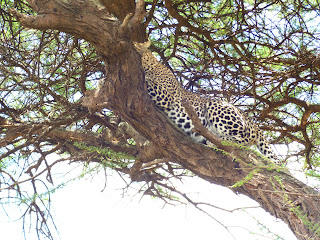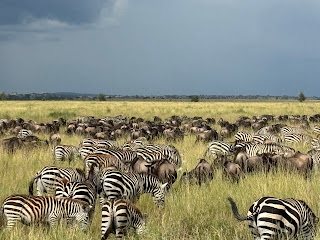Serengeti National Park, a World Heritage Site, is one of the most spectacular ecosystems on Earth. Approximately 15,000 square miles, it is home to over 2 million ungulates (elephants, rhinos, deer, zebras, hippos, etc.), 4000 lions, 1000 leopards, 550 cheetahs, and over 500 bird species. The Serengeti spans across Tanzania and Kenya, but is located primarily around the Arusha regions in the northern part of Tanzania.
I usually go on safari in June during the dry season, but chose March, even though it's the rainy season, so as to celebrate my birthday in the Serengeti. There were a couple of heavy rainstorms while I was there, but, fortunately, they occurred at night. There was one day of wet roads, however, and our jeep had to be pulled out of the mud! (This is why one needs to go on safari with experts who can do just about anything.)
To say that the Serengeti is magical doesn't come close to describing the beauty, splendor, and complete awe that one experiences when there. It's a place where we are reminded of our humanity or lack of; a place where we are truly at the mercy of a power far greater than we are; a place where human ego means nothing and humility and respect are called for. It is a place that is deep in my heart.
The Great Migration
The annual northwest journey towards the Maasai Mara in Kenya when millions of wildebeest, zebras, and gazelles travel in search of fresh grazing ground and additional water sources. Herds of wildebeest and zebra have been giving birth in the Serengeti during the early winter months and thousands of newborn calves now take their first steps as they try to keep up with the rushing speed of the adults. From the jeep, as far as the eye can see, the Serengeti is covered with a blanket of wildebeest and zebras and the sight and sounds of the migrating animals is an overwhelming experience.






















